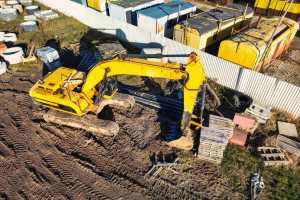Customer Due Diligence: The Process & Its Types

Customer due diligence, often known as CDD, is a requirement that must be met by any company that deals with customers and therefore is subject to anti-money laundering rules (AML). The prevention of financial crime and, indeed, the identification of any potential dangers to your company that may result from conducting business with specific clients are the goals of this initiative.
What is Customer Due Diligence?
Customer due diligence, often known as CDD, is the process of gathering identifying information about a client to authenticate that customer’s identification and get a more accurate reading on the level of potential criminal risk that the customer poses. At its most fundamental level, customer due diligence (CDD) mandates that businesses gather intelligence such as a client’s name and address, details regarding the company with which they are associated, and plans for how they intend to utilize their account. Businesses must then confirm details concerning official papers, including driving licenses, passports, utility bills, as well as business registration documents, to make sure that their consumers are being truthful. This will allow businesses to guarantee that their customers are telling the truth.
Evaluating information obtained from a variety of sources, such as the customer, sanction lists, as well as both public and private data sources, is part of the process of conducting CDD. The information that you collect may vary according to the risk profile of your client however performing even the most fundamental forms of customer due diligence will need the following steps:
Your clients’ names, addresses, and an image of them holding a government-issued identification document, among other identifying information, must be provided.
An overview of the operations carried out by your customers and the markets in which they are active, a rundown of any other companies or organizations with which your client does business, etc.
Types of customer due diligence
Operational
Investigates the systems and procedures of the target organization to identify risks that could result from the operation of the business process. During this phase, buyers evaluate the efficiency of the target company’s operating model, which includes sales, advertising, technology, supply-chain management, and production. Their goal is to identify any loopholes in the model as well as prospective areas that require more investment or development. The current condition of operations will be evaluated to determine whether or not they are capable of supporting the marketing strategy that will be submitted by the target firm.
Tax
Tax customer due diligence focuses on ensuring that the seller’s company does not have any outstanding tax liabilities from the past that could potentially be transferred to the acquiring company.
Business
At this stage, the same kind of risk assessment is carried out on the business processes and the factors that are associated with them, such as the markets, the consumers, and even the competition. When conducting customer due diligence on a company, the acquiring party gains a better understanding of whether or not an impending change in the industry poses a risk, whether or not existing procedures could be incorporated into new infrastructures, or whether or not the composition of the company’s customer base contains significant risk.
Legal
Contains an evaluation of the legal issues that a company is now facing as well as the associated risk surrounding contracts or lawsuits. Legal due diligence has a significant impact on whether or not a transaction would proceed forward. The framework of a deal can be affected by factors such as restricted and/or broken contracts, non-compete agreements, and litigation that has occurred in the past or is currently active. Just after the sale, the buyer will be responsible for meeting any duties, conditions, or constraints that arise as a result of the transaction.
Conclusion
Customer due diligence has become necessary for financial institutions to make the right decisions. With digital assistance, the CDD can be sped up and made more efficient.








